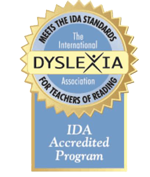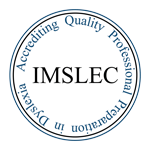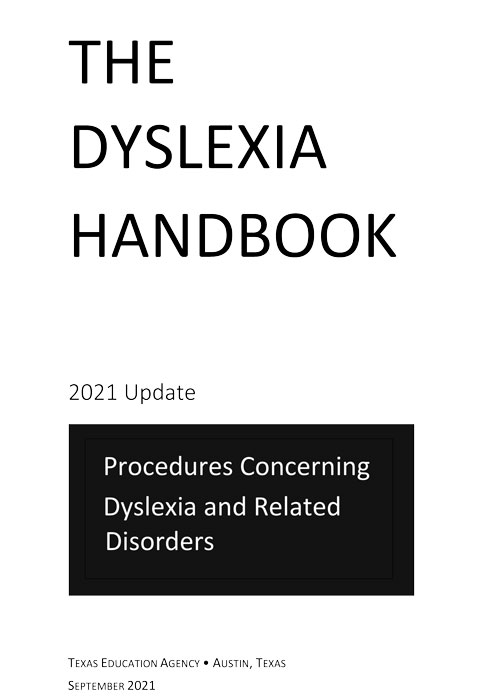Dyslexia

-
Click Here to Access the Dyslexia Portal for Additional Resources!
 Mission Statement
Mission Statement
The mission of the Keller ISD Dyslexia Department is to embrace all learners and empower them to realize their potential.Characteristics of Dyslexia: What to look for?
Students identified as having dyslexia typically experience primary difficulties in phonological awareness, including phonemic awareness and manipulation, single-word reading, reading fluency, and spelling. Consequences may include difficulties in reading comprehension and/or written expression. These difficulties in phonological awareness are unexpected for the student’s age and educational level and are not primarily the result of language difference factors. Additionally, there is often a family history of similar difficulties. The following are the primary reading/spelling characteristics of dyslexia:
The following are the primary reading/spelling characteristics of dyslexia:- Difficulty reading words in isolation
- Difficulty accurately decoding unfamiliar words
- Difficulty with oral reading (slow, inaccurate, or labored)
- Difficulty spelling
It is important to note that individuals demonstrate differences in degree of impairment.
The reading/spelling characteristics are most often associated with the following:
- Segmenting, blending, and manipulating sounds in words (phonemic awareness)
- Learning the names of letters and their associated sounds
- Holding information about sounds and words in memory (phonological memory)
- Rapidly recalling the names of familiar objects, colors, or letters of the alphabet (rapid naming)
Consequences of dyslexia may include the following:
- Variable difficulty with aspects of reading comprehension
- Variable difficulty with aspects of written language
- Limited vocabulary growth due to reduced reading experiences
(Fletcher, J. M., Lyon, G. R., Fuchs, L. S., & Barnes, M. A. (2007). Learning disabilities: From identification to intervention. New York, NY: The Guilford Press; L. C., Carreker, S., Davis, R., Meisel, P., Spear-Swerling, L., & Wilson, B. (2010). Knowledge and practice standards for teachers of reading. The International Dyslexia Association, Professional Standards and Practices Committee. Retrieved from www.interdys.org/ewebeditpro5/upload/KPSJul2013.pdf; Moats, L. C., & Dakin, K. E. (2008). Basic facts about dyslexia and other reading problems. Baltimore, MD: The International Dyslexia Association.)
State Handbook
-
The Dyslexia Handbook: Procedures Concerning Dyslexia and Related Disorders (English)
(PDF, Outside Source)
El Manual Sobre la Dislexia: procedimientos sobre la dislexia y trastornos relacionadosDyslexia Handbook 2021 Update: Important Changes for Families to Understand
Actualizacion del manual de dislexia 2021: cambios importantes que las familias deben entenderVideo: Updates to Dyslexia Handbook
Video: Los cambios al Manual sobre la Dislexia
-
Connecting Research and Practice
New research in understanding dyslexia as a neurodevelopmental disorder is ongoing. Future research will assist in learning more about the phonological awareness deficit and how this deficit interacts with other risk factors related to dyslexia. Research also is now focusing on the developmental cause of neural abnormalities and how these predict treatment response.
(Pennington, B. F. (2009). Diagnosing learning disorders: A neuropsychological framework (2nd ed.). New York, NY: The Guilford Press; Peterson, R. L., & Pennington, B. F. (2012). Developmental dyslexia. The Lancet, 379(9830), 1997–2007.)
Dyslexia Resources
- MTA
- Learning Ally
- Dyslexic Advantage
- Neuhaus Education Center
- Texas Scottish Rite Hospital for Children (TSRHC)
- Academic Language Therapy Association (ALTA)
- Dallas Branch of the International Dyslexia Association (DBIDA)
- International Dyslexia Association (IDA)
- Child of the Code
- Yale Center for Dyslexia & Creativity
- Handwriting Help
- Spelling City
- IDA Knowledge & Practice Standards
- Wright's Law
- TExES Exam 161 & 163 Resources
-
Curriculum
MULTISENSORY TEACHING APPROACH (MTA) is an alternative language arts program specifically designed for students experiencing serious reading difficulty, including dyslexia. It is based on Orton-Gillingham philosophy and techniques, and follows the introduction sequence of Alphabetic Phonics. MTA was field tested for nine years in both public and private school settings before it was published. A four-year trend analysis study (Reynolds, V., Vickery, K., and Cochran, S., Annals of Dyslexia, 1987) looking at both reading and spelling in regular and remedial classrooms showed highly significant gains for all remedial students as well as gains for regular classroom students, some also at significant levels.
MTA is a comprehensive language arts program addressing the areas of alphabet/dictionary skills, reading, reading comprehension, cursive handwriting, and spelling. Guided discovery and multisensory techniques are utilized for introducing, reviewing, and practicing skills in the curriculum areas listed above. These techniques involve students as active participants in their own learning process. Criterion-referenced Mastery Checks are administered periodically throughout the curriculum. Mastery criteria are 90% for spelling and reading. MTA addresses all descriptors of appropriate dyslexia programs as described by the International Dyslexia Association, and those in the Texas Dyslexia Procedures. More information can be found at: https://mtspublications.com/about-mts/.
EMPOWER ACHIEVE 3000 is a differentiated instruction program which focuses on literacy in the English language arts, core content areas and intervention techniques. The Empower 3000 program uses scaffolding teaching techniques designed to help struggling readers improve their reading scores. The selections are nonfiction and have supporting activities presented in a computer-based program. The reading activities help build stamina and strength for the students. Students strive to increase their ability to read, comprehend, apply and communicate information derived from complex texts. The student gets a baseline Lexile score, and all scores are reported on Lexile levels. This scoring allows students to track their progress! Keller ISD uses this program in their High Schools to compliment and support the Read Naturally Program. (Annotated from various Achieve sources)
READ NATURALLY LIVE is a research-based individualized reading program that helps students build fluency, and make solid gains in vocabulary and comprehension. Dyslexia interventionists integrate the Read Live components with the MTA curriculum to meet the needs of each student. The levels are well sequenced, and the non-fiction stories are not only interesting, but they build the students’ vocabulary and knowledge. It meets students at their level and allows them to practice to meet their goal, which in turn, builds confidence. The built in data collection feature gives a clear picture for parents, students and teachers to progress monitor.
GREEK/LATIN ROOTS- Benefits from learning prefixes, suffixes, and roots are enormous for all students. Typically, these morphemes have Latin and Greek origins. The ability to recognize stems not only increases a student’s ability to decode multisyllabic words, but enhances vocabulary development. Latin and Greet Roots: Teaching Vocabulary Using Hands-on Activities and Common Objects by Perry D. Stokes is one of many resources utilized in building morphology.
Dyslexia Specialists
- Basswood Elementary
- Bear Creek Intermediate
- BettePerot Elementary
- Bluebonnet Elementary
- Caprock & Keller Harvel Elementary
- Caprock Elementary
- Central High
- District-Wide
- Eagle Ridge Elementary School
- Eagle Ridge/Bluebonnet Elementary
- Florence Elementary School
- Fossil Hill Middle
- Fossil Ridge High School
- Freedom Elementary
- Freedom Elementary School
- Friendship Elementary
- Heritage & Friendship Elementary
- Heritage Elementary School
- Hidden Lakes Elementary
- Hillwood Middle & Keller Collegiate Academy
- Hillwood Middle &Vista Ridge Middle
- Independence Elementary School
- Indian Springs Middle
- Indian Springs Middle School
- Keller Harvel Elementary
- Keller High
- Keller Middle
- Keller Middle School
- Liberty Elementary
- Lone Star Elementary
- Lone Star Elementary School
- North Riverside Elementary School
- Park Glen Elementary
- Parkview Elementary School
- Parkwood Hill Intermediate
- Ridgeview Elementary School
- Shady Grove Elementary
- Sunset Valley Elementary
- Timber Creek High School
- Timberview Middle
- Timbeview Middle
- Trinity Meadows
- Trinity Meadows Intermediate
- Trinity Meadows Intermediate School
- Trinity Springs Middle
- Trinity Springs Middle School
- Trinty Springs Middle
- Vista Ridge Middle
- Vista Ridge Middle School
- Whitley Rd Elementary
- Woodland Springs Elementary School
| Showing results for "Professor named Smith at Elementary School" |
- Rhadonna Alexander
- Tiffany Blakey
-
District Contacts

Kimberly Wilson, Coordinator of Dyslexia Services
817-744-1094 ⋅ kimberly.wilson@kellerisd.net

Sharon Murphy, Educational Support Specialist
817-744-1048 ⋅ sharon.murphy@kellerisd.net


